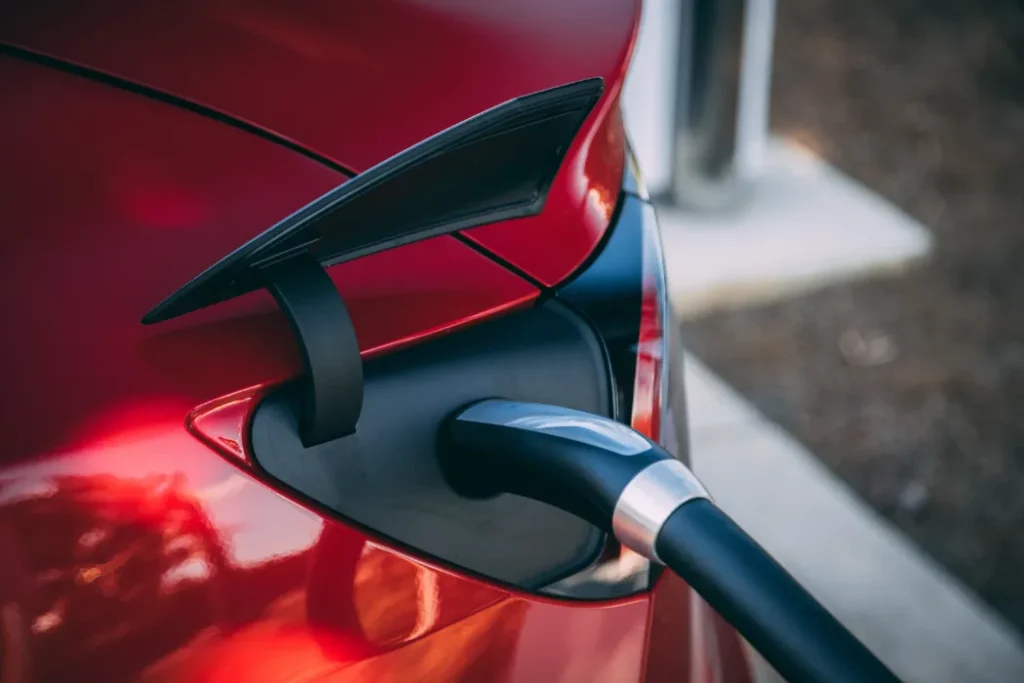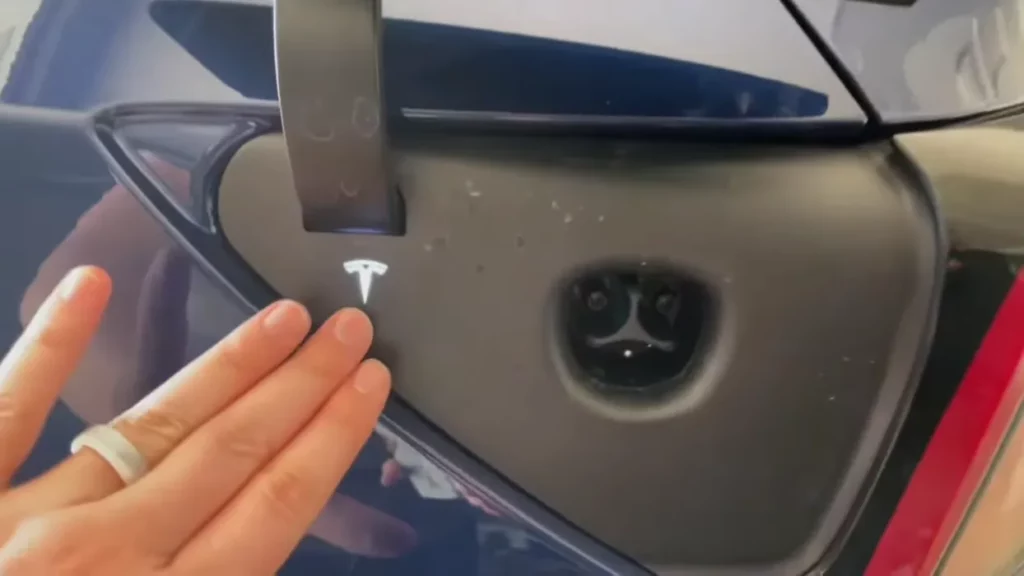Your eTesla’s “Charge Port Latch Not Engaged” notification can be concerning, especially if you’re trying to charge the car. It’s a warning that occurs when you haven’t probably kept the EV charging port in place properly.
Also, there might be a software glitch occurring which is delaying the charging procedure from beginning or finishing.
Close and reopen the charging port door manually to make sure it latches securely. When the touchscreen restarts, push both steering wheel scroll buttons to execute a hard reset if the issue doesn’t go away.

What Does It Mean When a Tesla Displays “Charge Port Latch Not Engaged”?
When a charging cable is plugged into an electric car, a mechanical latch in the charging port secures the cable. This latch makes sure both the charging cable and the car are firmly in place, enabling a quick and secure charge.
But, if something goes wrong regarding charging port larch, your EV’s onboard computer system will notice this. Then it will issue a warning through the mobile app or on the touchscreen in the car which usually says “Charge Port Latch Not Engaged.”
Why it occurs? There are numerous causes, including rusted charge pin tips, debris in the charging port, and many more.
When this issue occurs, many risks live near you. Because of the exposed electrical connections; a charging cable that is not properly secured can be dangerous.
But it is not like you cannot fix the issue. That’s why you first need to know the causes behind the issue in detail which you will find in the next part of the article. Let’s get started then.
Why Is The Charge Port Latch Not Engaged And How To Solve This?
Knowing the causes behind the issue solves half of the problem. So, let’s dive into the sea of explained causes of why the charge port latch of Tesla is not engaged:
1. Physical Damage:

Physical damage or wear and tear gradually could lead the latch mechanism to become out of alignment. The latch may not be able to securely engage with the power cable connector due to this misalignment.
Also, a broken or bent latch component or any external harm to the latch itself may hinder the mechanism from working properly.
In this condition, you need to replace the charging pins’ black plastic tips if you discover that several of them are broken or missing. Tesla will replace them for free under warranty and has released a service bulletin for this problem.
To request a mobile repair service, visit your local Tesla service center’s website.
2. Blockage Inside the Charge Port:
The area around the charging port can occasionally become clogged with debris, dirt, or foreign objects, preventing the latch from fully engaging.
But there is nothing to worry about, visually check if any debris, dirt, or other odd objects in the charging port can block the latch mechanism. Clear these unwanted objects to get rid of such an issue.
3. Software Glitch:
You may sometimes notice that the error message is appearing even if you have locked the plug properly and there is no debris in the port.
A software error or a breakdown in communication between the car’s computer and the charger could be to blame for this.
Software updates, network problems, or other circumstances may also be the reasons why you might be having the message.
You can attempt a system reset on your EV if you think there might be a software problem. The typical method for doing this is to switch off and then turn on the system of the car. To do so,
• Make sure that you have applied the parking brake while parking the car at a safe place.
• Press and hold each of the scroll wheels on the steering wheel until the touchscreen goes off and the Tesla ‘T’ symbol shows up. The procedure can take 10-30 seconds.
• After releasing the buttons, wait for the touchscreen in the center to restart in a minute.
• The reset is complete when the screen turns on again, and that’s when you need to update the Tesla’s system.
4. Issues with Sensors:
It is worth noting that Tesla and other contemporary EVs frequently have sensors that can tell if the power port door has been secured and locked. However, these sensors sometimes fail to work properly.
So, when it happens, the sensors have a chance to suggest incorrectly that the latch isn’t working even when it is.
You can reset the system and later update the software to make the sensors work better, again.
5. Faulty Electrical Wiring:
Latch engagement detection problems can result from broken, loose, or disconnected electrical wiring that connects the latch system to the control system of your Tesla.
To fix the issue, make sure that the charging cable is firmly inserted into the power port inlet. If it isn’t, remove the cable and plug it back in, remember to fully insert and securely fasten.
Next, look over the charger cable for any signs of wear or damage, such as frayed wires or damaged connectors. Replace the charging cable if you discover any damage.
6. Environmental Issues:
Extreme weather conditions may damage the functionality of mechanical parts like the latch. It mainly occurs when temperatures get extremely low, or excessive humidity appears.
If cold weather is to blame, consider warming up the area of the charge port or using the “Precondition Battery” function of the Tesla app to increase the temperature before trying to lock the charge port door.
When high humidity can cause the charge port latch to malfunction, consider drying the charge port area before planning to charge your Tesla.
7. User Error:
The problem could occasionally be the result of user error. The latch might not work as it should if you haven’t plugged in the charging cable properly or if there is too much resistance.
Before connecting the charging cable, remember to close the charge port door and engage the latch to its right place.
Read Also: Tesla Phone Charger Not Working: A Comprehensive Guide
Frequently Asked Questions [FAQs]
How can I solve this problem on my own?
Yes, you can, start by ensuring proper cable insertion, looking for blockages in the charging port, and performing physical latch activation. Check your vehicle’s handbook for further troubleshooting instructions if the problem continues.
Is it okay to use the EV when you having an issue with the charging port latch not being engaged?
When this notice appears, it’s normally secure to drive your EV because it primarily impacts the charging. To ensure that your vehicle charges consistently, you must take immediate action.
What if I can’t fix the problem myself?
If this is the case that you can’t solve this issue by yourself, it’s best to get expert help from your EV manufacturer’s service center or a licensed expert who works in electric vehicles.
Read Also: Tesla Wheel Alignment Cost Details Breakdown
